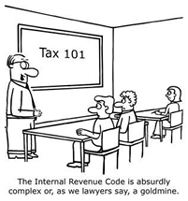 |
Tax Treatment Of Cost Segregation |
| |
Accounting Method Option
In regards to Cost Segregation, the IRS assumes adoption of a particular
method of accounting if you treat an item in the same manner on two
consecutively filed tax returns. If, on the initial return, you calculate
depreciation using a certain method, that method is "adopted" when you file
your return in year two, using the same method. In most cases, to change the
method of accounting, you need the consent of the IRS, which is obtained by filing
Form 3115.
Section 481(a) Adjustment
Section 481 (a) Adjustment is the amount of change in depreciation that is
allowable from the amount of the depreciation taken prior to the year of the
change of accounting method. When the Cost Segregation study is complete, the
assets identified are depreciated using the methods and periods as corrected.
The result is compared to the depreciation deductions claimed on all prior
returns for the same assets. Revenue Procedure 99-49 required that the
adjustment, whether positive or negative, be included in the income or deducted
in arriving at taxable income equally over a period of four years, although
revenue ruling 2002-19 changed that four-year rule to one year for adjustments
that are in the tax payer's favor. This benefits the taxpayer, as it creates a
negative adjustment to income, or a deduction. After completing a Cost Segregation
study, the tax payer may take into account the entire amount of income in the
year change by making an entry on the appropriate line of Form 3115.
Cost Segregation: Timely Filing
In regards to applying a Cost Segregation study, a change in accounting method
application should generally be filed within the first 180 days of the year
of change. This requirement is waived for application filed in accordance with
Revenuer Procedure 99-49 - which must be filed in duplicate. The original must
be filed with the return for the year of change by the due date and a copy must
be sent to the national office of the IRS no earlier than the first day of the
year of change, and no later than the date the original is filed with the return
for the tear of change.
|


|
|
| |
|
|